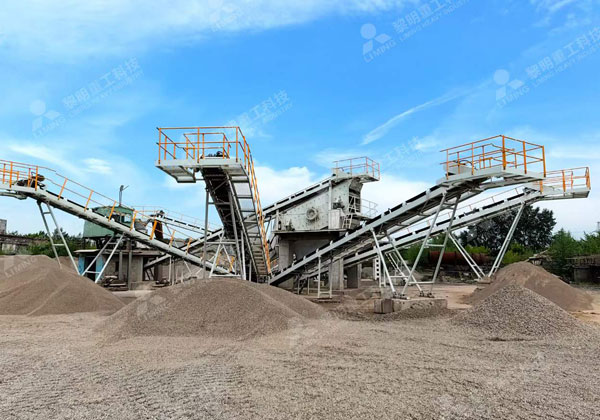Gravel classification using vibrating screens is a crucial process in various industries such as construction, mining, and aggregate production. The classification of gravel involves separating the material into different sizes or grades to meet specific project requirements. Vibrating screens play a vital role in this process by efficiently sorting and segregating the gravel based on size.
Vibrating screens are widely used due to their effectiveness, versatility, and relatively simple design. They consist of a screen mesh supported by a vibrating mechanism, which causes the material to move across the screen deck. As the gravel is fed onto the vibrating screen, the vibrations impart kinetic energy to the particles, causing them to stratify based on size. The smaller particles tend to settle towards the bottom of the screen, while the larger ones are retained near the top.

The process of gravel classification using vibrating screens typically involves several stages:
- Feeding: Raw gravel is fed onto the vibrating screen deck through a hopper or conveyor system. The material is evenly distributed across the width of the screen to ensure uniform screening.
- Screening: As the gravel passes over the vibrating screen, the vibrating motion separates the material into different size fractions. The screen mesh openings determine the size of the particles that can pass through. Smaller particles fall through the mesh and are collected as undersize material, while larger particles are retained on the screen surface as oversize material.
- Deck Configuration: Vibrating screens may have multiple decks stacked on top of each other, with each deck having its screen mesh size. This configuration allows for the simultaneous classification of multiple size fractions in a single pass. Typically, the top deck separates the coarsest material, while subsequent decks handle finer particles.
- Screening Efficiency: The efficiency of gravel classification using vibrating screens depends on various factors, including screen inclination, amplitude, frequency, and the angle of inclination. Optimal settings maximize throughput while ensuring accurate separation of particles.
- Particle Discharge: Once classified, the separated gravel fractions are discharged from the vibrating screen deck into separate chutes or conveyors for further processing or stockpiling. Undersize material may undergo additional screening stages or be directed to downstream equipment for further refinement.
- Maintenance: Regular maintenance is essential to ensure the proper functioning of vibrating screens. This includes inspecting the screen mesh for wear or damage, lubricating moving parts, and checking the vibration mechanism for any signs of malfunction.
Gravel classification using vibrating screens offers several advantages:
- Efficiency: Vibrating screens can process large volumes of gravel quickly, increasing productivity and throughput.
- Versatility: Vibrating screens can classify a wide range of materials, including various types of gravel, crushed stone, sand, and aggregates.
- Customization: Screen mesh sizes and deck configurations can be customized to meet specific grading requirements for different applications.
- Cost-effectiveness: Vibrating screens are relatively cost-effective compared to alternative classification methods, making them a preferred choice for many industries.
In conclusion, gravel classification using vibrating screens is a critical process in industries where accurate particle sizing and segregation are essential. By efficiently separating gravel into different size fractions, vibrating screens contribute to the production of high-quality materials for construction, infrastructure development, and other applications. With proper design, operation, and maintenance, vibrating screens offer a reliable and cost-effective solution for gravel classification needs.
